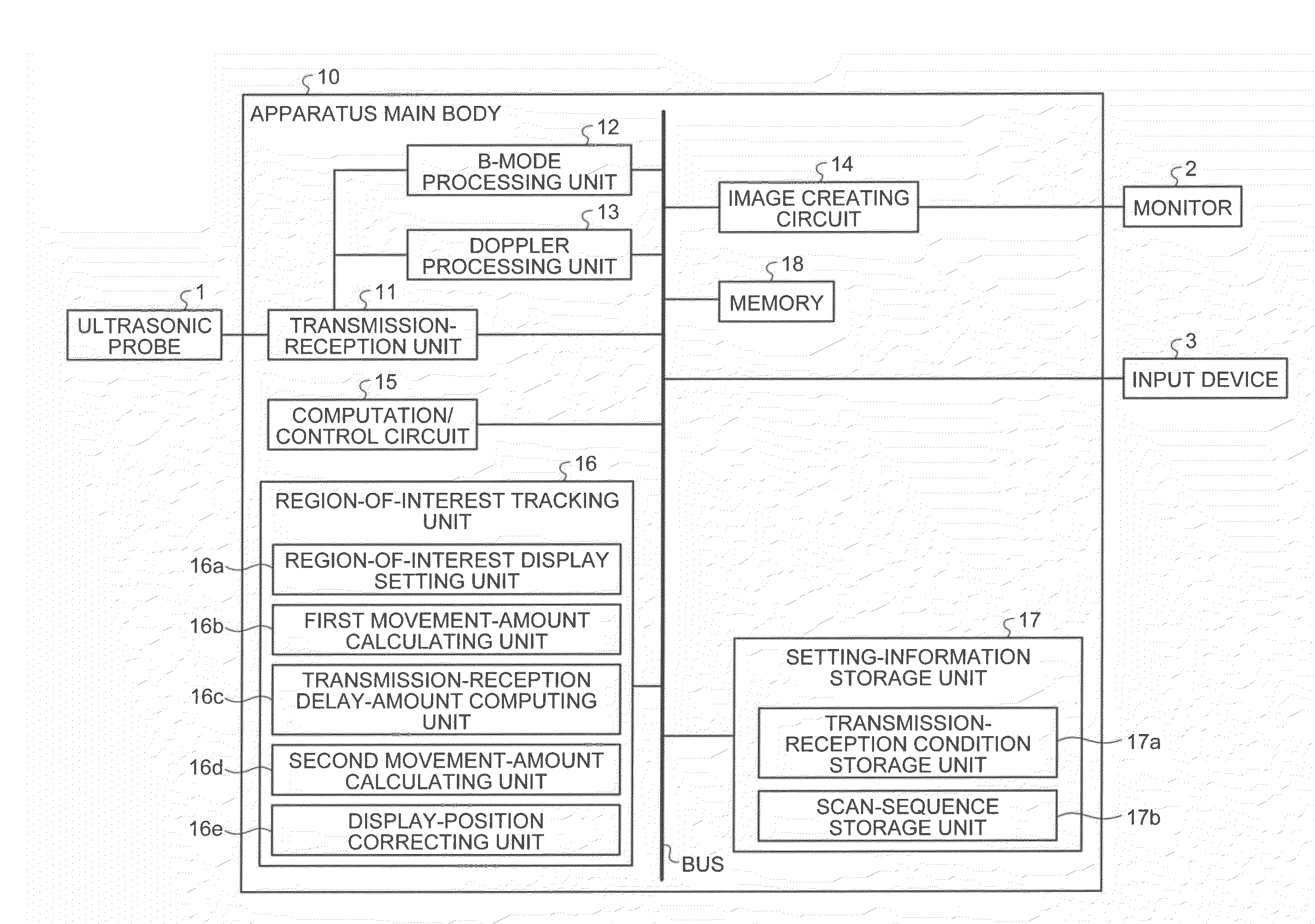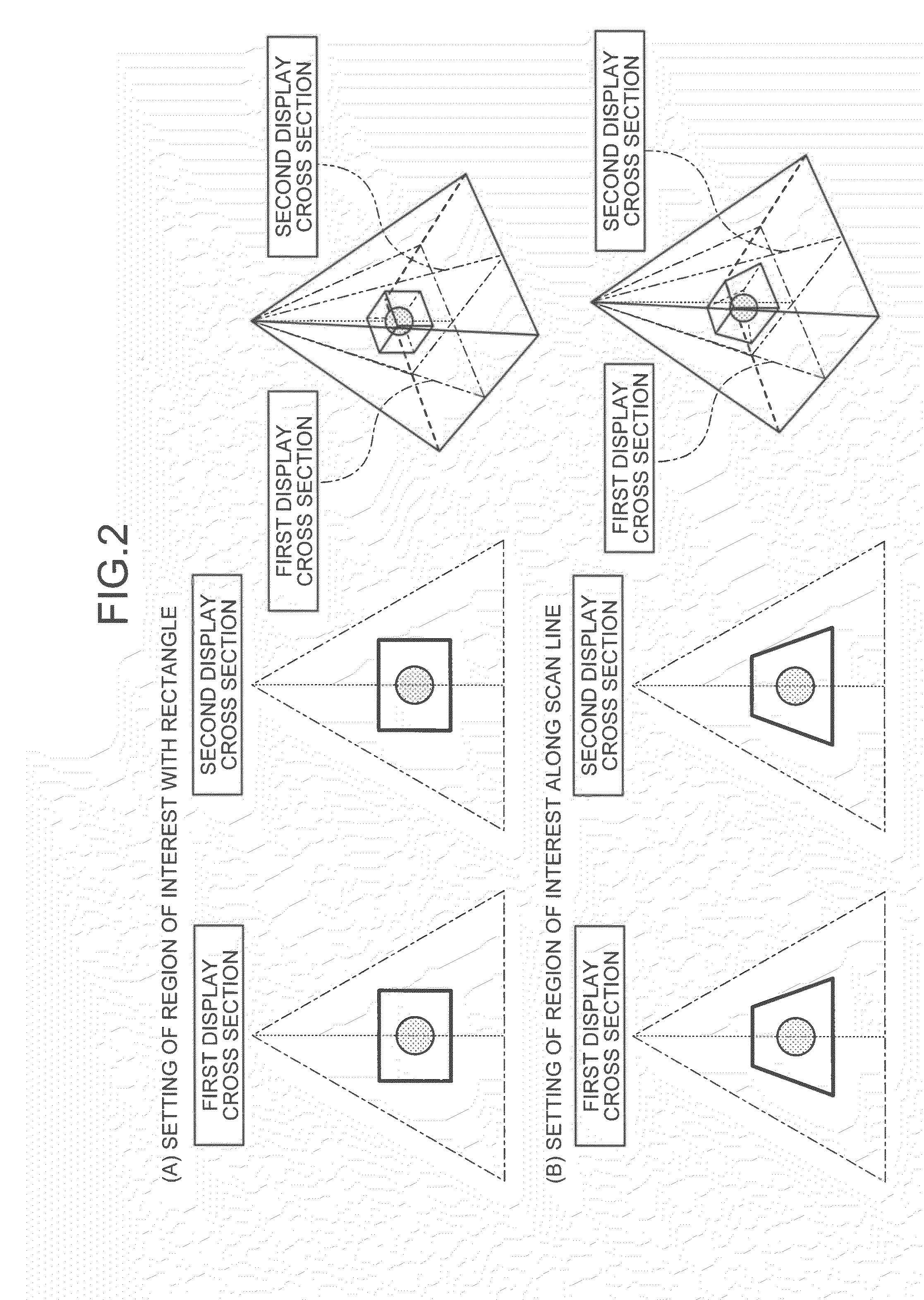Ultrasonic diagnostic apparatus and computer program product
a diagnostic apparatus and ultrasonic technology, applied in the field of ultrasonic diagnostic equipment and computer program products, can solve the problems of reduced scan rate, loss of realtime responsiveness, and large stress on a subject, and the burden on an operator tends to be larg
- Summary
- Abstract
- Description
- Claims
- Application Information
AI Technical Summary
Benefits of technology
Problems solved by technology
Method used
Image
Examples
first embodiment
[0046]The B-mode processing unit 12 and the doppler processing unit 13 can process both two-dimensional data and three-dimensional data, and perform data creation processing for image composition based on three-dimensional reception data created from a three-dimensional reception signal received by the ultrasonic probe 1 that is a two-dimensional ultrasonic probe, according to the
[0047]The image creating circuit 14 creates a B-mode image, a doppler image, or a superposed image of a B-mode image and a doppler image, by performing transformation process into a rectangular coordinate system (orthogonal transformation process) and digital-to-analog (D / A) conversion process on data for image composition received from the B-mode processing unit 12 or the doppler processing unit 13, and the created image is displayed on the monitor 2. The B-mode processing unit 12, the doppler processing unit 13, and the image creating circuit 14 correspond to “an image creating unit” described in the clai...
second embodiment
[0131] processing of creating data for B-mode image composition is performed in a separated manner by two systems, namely, the first B-mode processing unit 12a and the second B-mode processing unit 12b.
[0132]In other words, the first B-mode processing unit 12a includes a filter that separates a fundamental wave for extracting data dominated by living-body tissue signals from reception data created by the transmitting-receiving unit 11; and the second B-mode processing unit 12b includes a filter that separates a subharmonic wave or a higher harmonic wave for extracting data dominated by contrast agent signals from reception data created by the transmitting-receiving unit 11.
[0133]As shown in FIG. 10, the first B-mode processing unit 12a extracts a fundamental wave that is a signal from a living body tissue through a receiving filter included in the first B-mode processing unit 12a, and creates data for B-mode image composition from the extracted fundamental wave. The fundamental wav...
PUM
 Login to View More
Login to View More Abstract
Description
Claims
Application Information
 Login to View More
Login to View More - R&D
- Intellectual Property
- Life Sciences
- Materials
- Tech Scout
- Unparalleled Data Quality
- Higher Quality Content
- 60% Fewer Hallucinations
Browse by: Latest US Patents, China's latest patents, Technical Efficacy Thesaurus, Application Domain, Technology Topic, Popular Technical Reports.
© 2025 PatSnap. All rights reserved.Legal|Privacy policy|Modern Slavery Act Transparency Statement|Sitemap|About US| Contact US: help@patsnap.com



